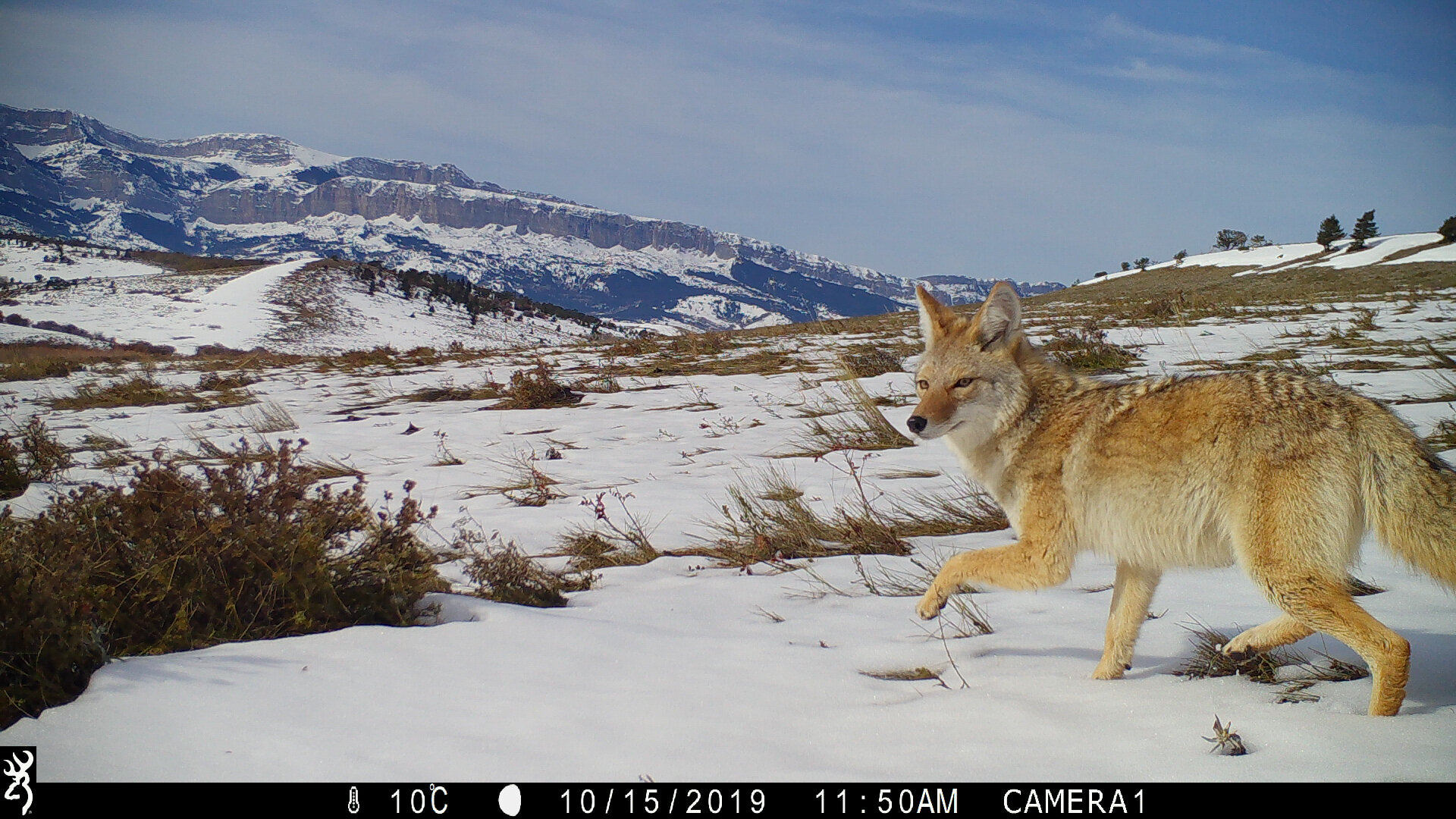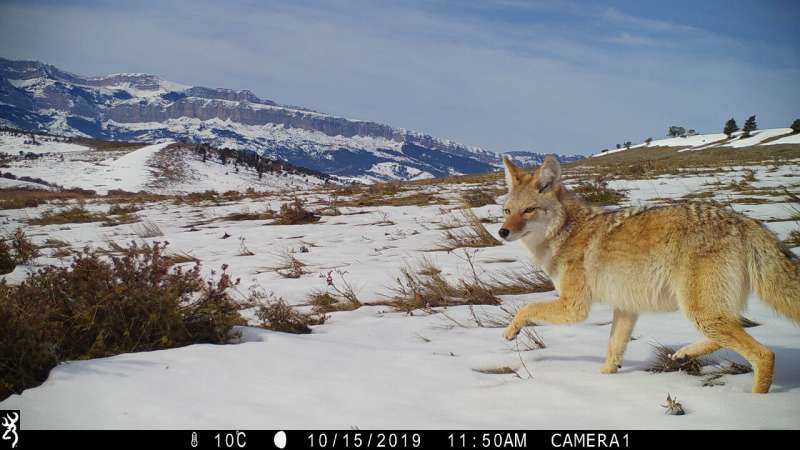

Research led by the University of New Hampshire sheds light on how coyotes, North America’s most successful predators, are responding to various environmental pressures, including human development, hunting and competition with larger carnivores. Surprisingly, the study’s findings suggest that human hunting practices may actually contribute to increasing the number of coyotes.
“Intensive coyote removal can obviously reduce populations in the short-term, but removal can also result in younger coyote populations with higher reproduction and immigration rates,” said Remington Moll, assistant professor of natural resources and the environment and lead author.
“In our study, we detected more coyotes in places where hunting was allowed. This trend occurred over several years, suggesting that, on average, hunting did not reduce coyote abundance and perhaps increased it locally in certain areas.”
Published in the journal Ecography, the study, one of the largest-scale studies of coyote populations to date, explored the complex dynamics shaping coyote populations across a wide range of diverse habitats—from rural to suburban. It used data from over 4,500 cameras set up across the country by the Snapshot U.S. project, a national project that collects wildlife data from coordinated camera arrays across the contiguous United States.
The data was combined with satellite-derived habitat metrics and analyzed using various advanced modeling techniques that allowed the team to evaluate the effects of habitat type, competition with larger carnivores, hunting practices and suburban expansion on coyote populations—providing the researchers with a clearer understanding of how coyotes respond to varying environmental pressures.
“Our work suggests that promoting the recovery of large carnivores, especially in certain habitats, is more likely to reduce coyote numbers than people directly hunting them,” said Roland Kays, a research professor with North Carolina State University’s College of Natural Resources and study co-author.
“With this data, we can now map them out across the country to provide the first abundance map of our country’s most important predator—an effort that could help in both conservation and coyote management.”
Coyotes are the most successful carnivores on the continent. Having spread throughout the eastern United States, coyotes come into regular contact with humans. However, until now, the factors influencing the number of coyotes across suburban, rural and wild landscapes have remained largely unclear.
Other key findings include that the presence of larger carnivores, such as black bears and pumas, influenced coyote numbers in a habitat-dependent manner. For example, black bears had a stronger limiting effect on coyotes in forested areas, whereas pumas exerted a similar influence in more open environments. Coyote abundance was highest in grasslands and agricultural landscapes—regions that provide ample prey and shelter.
Additionally, the impact of urbanization on coyote populations varied by scale: At smaller, local scales, urban development tended to reduce coyote numbers due to increased human presence and habitat fragmentation. However, at larger, suburban scales, coyote populations thrived, benefiting from the fragmented habitats and edges that offer access to both natural and human-modified resources.
The study also highlighted significant regional variation in coyote populations across the United States, with particularly high numbers in the southwestern U.S. and lower populations in the northeast, reflecting the diverse ecological and geographical factors at play.
Other co-authors include Austin Green, Science Research Initiative at the University of Utah and Maximilian Allen, Prairie Research Institute at the University of Illinois.
More information:
Remington J. Moll et al, People or predators? Comparing habitat‐dependent effects of hunting and large carnivores on the abundance of North America’s top mesocarnivore, Ecography (2024). DOI: 10.1111/ecog.07390
Provided by
University of New Hampshire
Citation:
Coyotes are thriving despite human and predator pressures, large-scale study finds (2024, November 6)
retrieved 6 November 2024
from https://phys.org/news/2024-11-coyotes-human-predator-pressures-large.html
This document is subject to copyright. Apart from any fair dealing for the purpose of private study or research, no
part may be reproduced without the written permission. The content is provided for information purposes only.